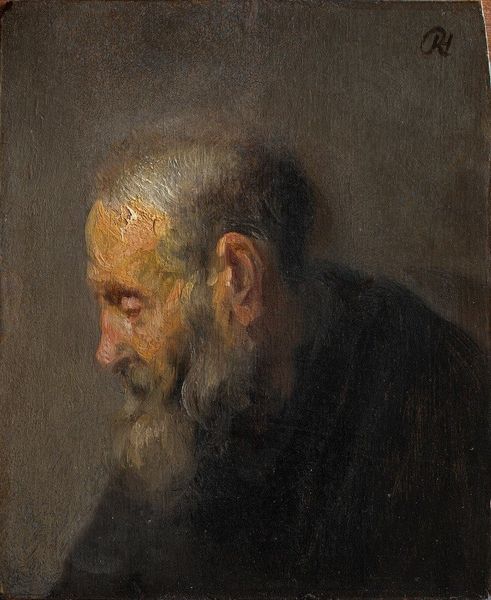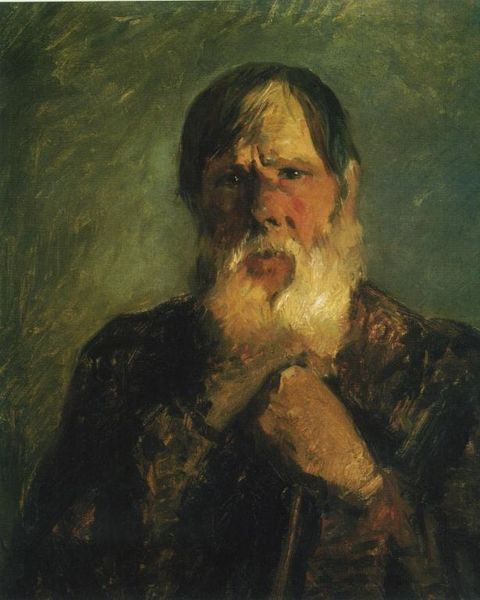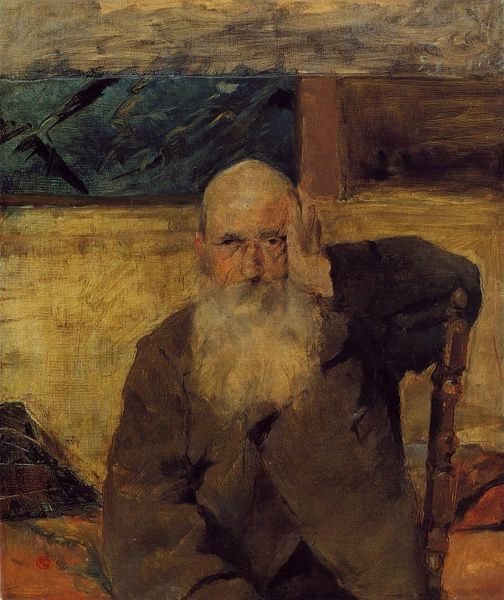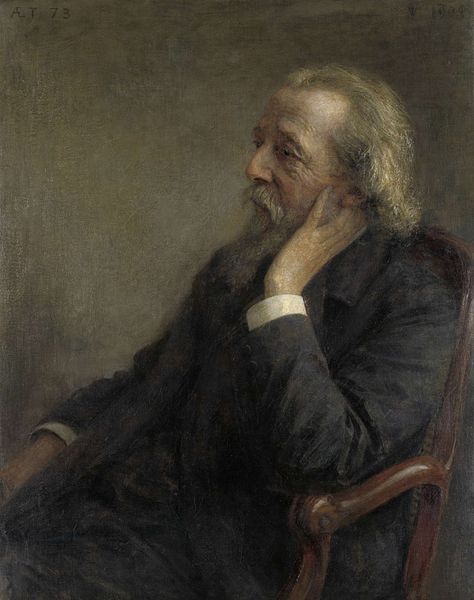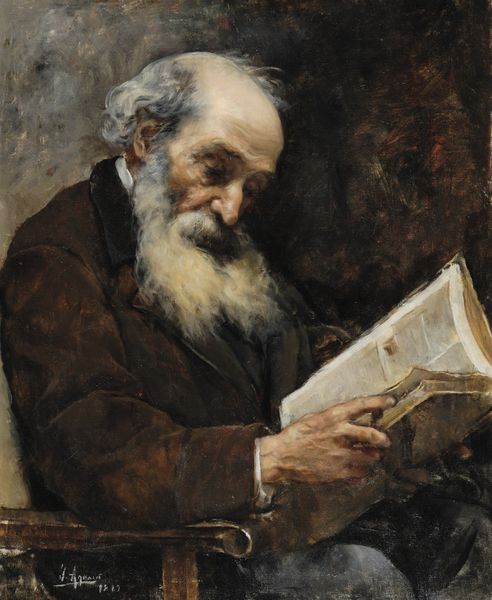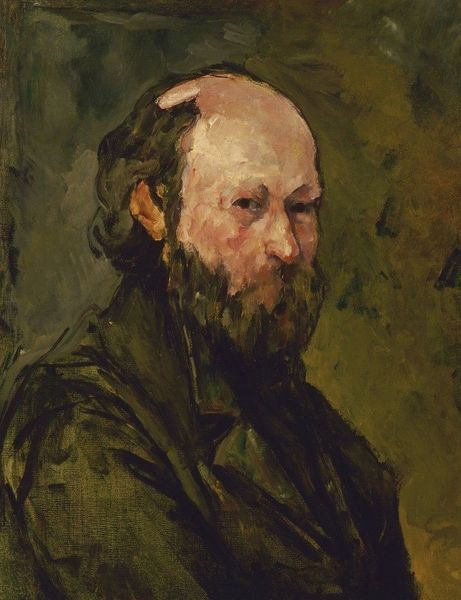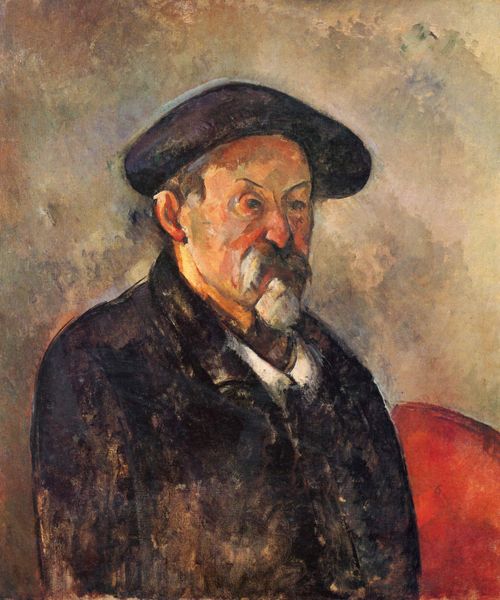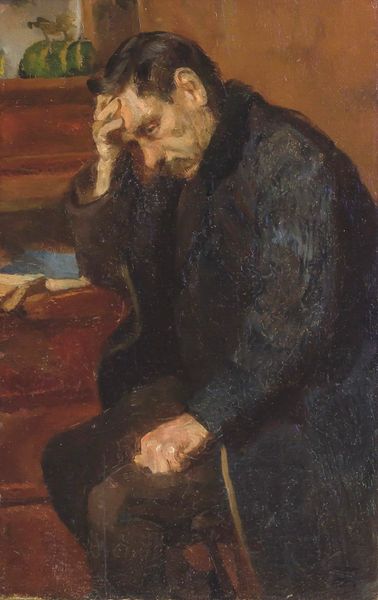
painting, oil-paint
#
portrait
#
painting
#
oil-paint
#
figuration
#
oil painting
#
expressionism
#
modernism
Copyright: Public domain
Curator: This is Alexej von Jawlensky's "The Old Jew," painted in 1893. It's an oil on canvas, a fairly early work from the artist, displaying a somber and deeply felt figuration. Editor: The tonal range is limited, almost monochromatic, with browns dominating. It creates this incredible sense of subdued introspection, heightened by the textures of the visible brushstrokes. You can see how he is modelling volume, shadow and plane almost all through the density and direction of the paint application. Curator: Absolutely. It also pulls at archetypal heartstrings, doesn't it? The figure conforms to very old, arguably persistent and harmful stereotypes. And yet Jawlensky humanizes his subject, depicting not caricature, but profound sorrow. The bent head, the downward gaze, the long beard...all iconic. He even adopts conventional garb. Editor: The painting surface itself invites interrogation. Consider the almost frenzied brushwork. There's a certain lack of clear lines to suggest the subject is at unease, possibly in pain, but in his acceptance he also appears at rest, albeit tentatively. Curator: The historical context is crucial. In 1893, anti-Semitism was rampant. Representations of Jewish people were often deeply prejudiced. By imbuing the man with such visible sadness, Jawlensky evokes both the personal suffering and perhaps also some of the communal plight that shaped diasporic life. Editor: I am inclined to agree. The impasto heightens that expressive depth. This wasn’t a casual likeness. Curator: Consider, too, the title. Simply "The Old Jew." It feels deliberately generic, pointing to a wider representation. But then the individuality bursts through the title's limitation, revealing complexity that defies easy categorization. This work exists in the nexus of tradition, religion, but primarily grief. Editor: I leave the painting now, reflecting on how much can be achieved in this intimate format with subtle compositional skill. I wonder what meaning might still emerge. Curator: Yes, a poignant example of how art can embody both individual feeling and historical realities, challenging our perceptions. A painting to be absorbed by, really.
Comments
No comments
Be the first to comment and join the conversation on the ultimate creative platform.

